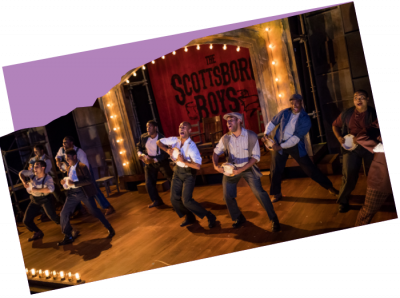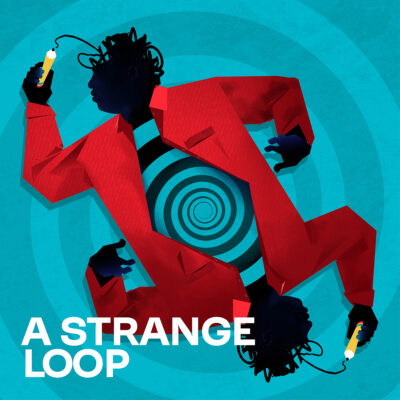Your donation sets the stage for a new season of Boston's most intimate, entertaining and provocative plays and musicals. Our shows make powerful connections with our audiences-- and they are only possible because of you.
Calendar
Search
Puppetry Director Roxanna Myhrum




Puppetry Director Roxanna Myhrum
When it comes to puppets, we all have different associations with the art-form: from adorable to kooky to downright creepy. In Hand To God, we get a healthy mixture of all three. To help wrangle the insane Tyrone and the seductive Jolene, we brought in Roxanna Myhrum, Artistic Director at Puppet Showplace Theater and puppeteer extraordinaire. We sat down with Roxanna to interview her about the ins and outs of her craft.
How did you get started in puppetry?
Growing up I took acting classes at an awesome theater school called The Drama Studio in Springfield, MA. My teachers Derron Wood and Carl Weiting were both outstanding puppeteers who were Bread and Puppet Theater alumni. From them, I learned to love non-realistic visual and object theater, pageantry, ritual ensemble, mask theater, and other related disciplines. From them, I learned the basics of puppetry performance, building, and manipulation. When I was 15, they invited me to be part of the ensemble who staffed the “emerging artist” track at the O’Neill National Puppetry Conference in Waterford, CT. I wound up performing in two pieces, one by Heather Henson (daughter of Jim Henson) and the other by Hua Hua Zhang, an incredible master puppeteer trained in Beijing. I also met the Rose Family, descendants of the original creators of Howdy Doody, several Sesame Street puppeteers, and students and professors from the UCONN puppet arts program. It was an incredible experience for a young artist, and I was hooked!
How do you train someone to work with puppets? What is the first or most important rule or thing one has to learn about the art?
When you teach puppetry, you’re teaching someone how to make something that is not alive appear to be alive. We do this by adding movement. The foundational movements of this illusion are breath and focus. You could give an entire, fascinating performance that communicated mountains of information about a character using nothing but breath (sobs, pants, gasps, wheezes…) and focus (what the character is looking at).
Are puppets props or actors?
Puppets are designed characters that puppeteer-actors bring to life. To ask this another way…are puppeteers actors or stagehands? SAG answered this in an interesting union discussion that came up when puppetry started involving a lot of robotics, CG animation, and other high-tech effects. “Actor” won out in this case. The reasoning was that there was still room for character interpretation, and if you are taking direction from the director, you are an actor-puppeteer giving a performance, even if it involves a lot of technology.
How do you keep your right hand from knowing what your left hand is doing when you are in a scene with yourself?
Practice, practice, practice! First, you need complete mastery of your lines and a profound understanding of what each character wants from the other–the kind of “table work” that actors do, just multiplied x 2. Then, you start to practice at half speed. The trick here is to use the audience as an intermediary. You’ll notice in a scene like the one that takes place in Jason’s bedroom, that Jason and Tyrone don’t just sit and look at each other. When Jason speaks, he looks at the audience, and then looks back at Tyrone. Tyrone listens, then looks out to the audience, then looks back at Jason. We keep “ping-ponging” focus like this throughout the scene. This is how we get the audience to feel invested in both characters, and to believe that they are both listening to each other and responding in real time.
How does puppetry differ from other types of theater?
As puppeteers, we feel compelled to answer the question “Why Puppets?” There are a bunch of things that puppet characters can do well that actors can’t do at all, like have their head ripped open and their brains pulled out like happens to Tyrone. There are also things that puppets can’t do on stage, and their inherent physical limitations become interesting, as they are fundamentally built to do a particular set of things very well at the expense of others. For me, puppetry is most compelling when some story or problem or existential situation is actually built into the puppet. An example of this might be a marionette show of “A Christmas Carol” where Jacob Marley’s ghost is actually built out of chains and promissory notes. Or a puppet who is supposed to be heartless who literally has no heart. We refer to this sort of design as “visual dramaturgy.” We also sometimes say “the medium is the message.” For more on this, I defer to the great Eric Bass of Sandglass Theater in Vermont.
What is your role as Artistic Director at Puppet Showplace Theater?
At Puppet Showplace I’m in charge of all of our performance and educational programming. We are primarily a presenting theater, so I work with dozens of puppet companies with touring performances to create a season for all ages, 3 years old to adults. I also oversee our Incubator new works program, and support artists who are developing new shows. Each year, we have over 300 performances on site, and welcome 20,000+ people to our Brookline Village location. We also do a lot of collaborations and community events, and I work with various partners and sponsors to find ways to bring puppetry experiences to venues throughout the Northeast. Whenever possible, I look for opportunities to advocate for the art form whenever and where ever I can!
The Company is now in its 42nd Season. To what do you attribute its longevity?
There are so few puppet theaters in the United States, but those that exist are treasured by the communities they serve. Puppeteers are also enormously generous human beings. Since it was founded in 1974, Puppet Showplace has been a home for touring artists, we benefit from their stellar reputations and immense talent. We’ve weathered some tough times financially, but the theater is currently in a strong position and we’re growing by leaps and bounds. It’s one of my biggest goals to invest more in the artists that we serve and to support their creative goals as much as possible.
What do you have coming up at your theater?
A million things! We’re presenting the world premiere of our newest show, “I Spy Butterfly” by Faye Dupras, running January 21 – February 5. For adults, our Puppets at Night series is presenting the Boston Debut of “Finding Home” by Monica Leo, a fascinating look at one family’s immigrant experience. We also have our famous evening of cabaret-style puppet theater, the Puppet Showplace Slam, happening every other month, and lots of adult classes, including “Sock Puppet Pro” taught by Jon Little who designed Tyrone! More info at www.puppetshowplace.org. I hope to see you there!
Because of You
SpeakEasy Signups
Sign up to get the latest updates on all our shows, readings, workshops and programs.
 Join us for spectacular season 33!
Join us for spectacular season 33! Past Productions
Past Productions a strange loop
a strange loop




